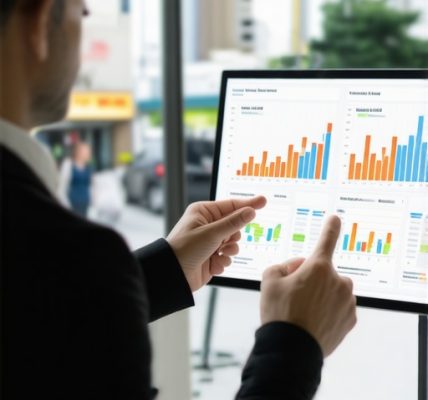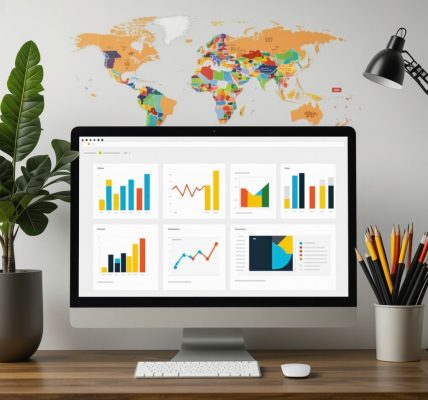Understanding the Importance of GMB Categories for Local SEO
When it comes to enhancing your local SEO performance, selecting the right Google My Business (GMB) categories can make all the difference. GMB categories help Google understand what your business is about, enabling it to display your listing to the right audience. Proper categorization not only improves your visibility in search results but also enhances your chances of showing up in the coveted local map pack.
To maximize your GMB listing’s effectiveness, it’s essential to select categories that are relevant and specific to your business. This specificity allows potential customers to find you more easily when they search for services or products that you offer. In this article, we will delve into the best practices for selecting GMB categories and how these choices can significantly impact your local SEO ranking.
Choosing the Right Primary Category
Your primary category is the most crucial choice you will make when setting up your GMB listing. This category defines your business and should be the one that most accurately reflects your main offering. For instance, if you run a bakery, your primary category should be “Bakery”. Choosing a broad category may seem tempting, but it often dilutes your visibility; therefore, precision is key.
In addition to selecting a primary category, you can also choose secondary categories that represent additional services or products. For example, if your bakery also offers catering services, you might select “Caterer” as a secondary category. This strategy not only provides a fuller picture of your business but also increases your chances of appearing for various relevant searches.
Utilizing GMB Categories for Enhanced Visibility
Understanding how to effectively use GMB categories can give you a competitive edge in local SEO. Here are some tips to consider when optimizing your GMB categories:
- Research Competitors: Analyze what categories similar businesses in your area are using. This can provide insights into which categories are likely to work best for your listing.
- Stay Updated: Google periodically updates its category list, so it’s essential to stay informed about any changes that may affect your listing.
- Be Specific: Choose categories that are as specific as possible. For instance, instead of just “Restaurant”, opt for “Italian Restaurant” if that’s what you serve. This helps in targeting the right audience more effectively.
For more detailed strategies on optimizing your GMB listing, refer to our guide on How to Optimize Your Google Business Listing Effectively. It covers various aspects of GMB optimization that can enhance your local search performance.
Moreover, understanding the significance of GMB categories ties closely into broader local SEO practices. If you want to learn more about the fundamentals of local SEO for small businesses, check out our comprehensive post on Understanding Local SEO for Small Businesses, which provides a solid foundation for improving your online visibility.
Leveraging GMB Categories for Local Search Optimization
Once you have chosen the appropriate GMB categories, the next step is to leverage them effectively for local search optimization. Understanding how Google indexes these categories can enhance your business’s online presence. Businesses that strategically select their GMB categories often find themselves ranking higher in local searches, leading to increased visibility and foot traffic.
Monitoring Your GMB Category Performance
Regularly monitoring the performance of your GMB categories is crucial for ongoing optimization. Google My Business provides insights that can help you understand how users are finding your listing. Pay attention to the traffic generated through different categories and adjust your selections as needed. This ongoing evaluation can help you stay competitive in your local market.
For instance, if you notice that customers are frequently searching for specific keywords related to your secondary categories but not finding your listing, consider switching to a more relevant category. This can significantly improve your local visibility and user engagement.
Combining GMB Categories with Local SEO Techniques
While selecting the right GMB categories is essential, combining them with other local SEO techniques can amplify your results. For example, integrating your GMB categories with targeted keyword strategies can optimize your overall local search performance. Utilize effective GMB keyword research to identify terms that potential customers are using to find services similar to yours.
Incorporate these keywords into your website content, GMB posts, and even in the descriptions of your services. This cohesive approach can drive more traffic to your business profile and improve your chances of ranking higher in local search results.
Staying Ahead with GMB Updates
Google frequently updates its algorithms and features, which can impact how GMB categories function. Staying informed about these updates is vital for maintaining your competitive edge. Regularly check the GMB SEO audit practices to ensure your listings are compliant with the latest guidelines and standards.
For instance, Google may introduce new categories or modify existing ones. Being proactive in updating your GMB category selections in response to these changes can further enhance your local SEO effectiveness.
Utilizing Customer Feedback for Category Optimization
Another valuable aspect of optimizing your GMB categories is leveraging customer feedback. Reviews often contain keywords and phrases that customers use to describe your business. Analyzing this feedback can provide insights into what categories resonate most with your audience. By aligning your GMB categories with customer perceptions, you can create a more accurate representation of your business.
For example, if multiple reviews mention your bakery’s unique pastries, it may be worth considering a secondary category like “Pastry Shop”. This adjustment can attract a more targeted audience and improve your listing’s relevance.
As you refine your GMB categories, remember that optimizing your Google My Business listing is just one piece of the broader local SEO puzzle. For comprehensive strategies on enhancing your local search performance, explore our post on Comprehensive Local SEO Optimization Techniques. This guide will help you integrate various elements of local SEO for optimal results.
Implementing GMB Categories for Enhanced User Engagement
Once you have established the right Google My Business (GMB) categories, the next step involves leveraging them for increased user engagement. When potential customers search for services relevant to your business, having well-chosen categories not only improves visibility but also enhances the likelihood of user interaction. Engaging with users through posts, photos, and updates relevant to your categories can further solidify your presence in local search results.
Creating Targeted GMB Posts
Utilizing GMB posts is an effective way to keep your audience informed and engaged. Create posts that highlight your offerings in the context of your selected categories. For instance, if one of your categories is “Café,” you might post about a new coffee blend you’re introducing or a special promotion on pastries. These posts not only keep your listing fresh but also encourage users to visit your business.
Regular updates can significantly improve user interaction. Potential customers are more likely to engage with a listing that showcases recent activities, promotions, or community involvement. For more tips on maximizing your GMB posts, check out our article on GMB Weekly Posting Best Tips for Engagement Strategies.
Utilizing High-Quality Visual Content
Visual content plays a crucial role in attracting potential customers. Incorporating high-quality images that reflect your business categories can enhance your listing’s appeal. For example, if you are a restaurant, showcase your signature dishes or the ambiance of your dining area. These visuals help convey the essence of your business and can significantly impact customer perceptions.
Additionally, Google My Business allows you to upload videos, which can further enrich your listing. Consider creating short clips that introduce your team or highlight special events. For more insights into effectively using visual content, refer to our guide on The Ultimate Guide to GMB Photo Optimization Success.
Analyzing GMB Insights for Continuous Improvement
To ensure your selected GMB categories are performing optimally, it’s essential to analyze GMB insights regularly. These insights provide valuable data on how users find your business, including the keywords they use and their interactions with your listing. By understanding these patterns, you can adjust your GMB categories or posts to better align with user behavior.
Identifying User Behavior Trends
Monitoring user behavior trends can reveal which categories are driving the most traffic to your listing. If you notice that a particular category is underperforming, consider experimenting with different descriptions or enhancing your visual content related to that category. Engaging with customers through reviews and responding to inquiries can also help you gather feedback to refine your approach.
Adjusting Your Strategy Based on Performance
As your business evolves, so should your GMB strategy. Regularly revisit your GMB categories and assess their relevance to your current offerings. If your business has expanded or diversified, updating your categories can help ensure you’re reaching the right audience. For more comprehensive strategies on enhancing your local search performance, explore our article on Comprehensive Local SEO Optimization Techniques.
Staying Informed About GMB Updates for Better Optimization
Google frequently updates its algorithms and features related to GMB, which can directly impact how categories function. Staying informed about these changes is crucial for maintaining your competitive advantage. Subscribe to industry newsletters or follow relevant blogs to receive updates on GMB enhancements that may affect your business. This proactive approach can help you adapt quickly and maintain optimal visibility in local search results.
Understanding GMB Insights for Strategy Refinement
As you continue to optimize your Google My Business (GMB) categories, leveraging GMB insights is crucial for refining your strategies. These insights provide data on how potential customers interact with your listing, including the search terms they use to find your business. By analyzing this information, you can adjust your GMB categories and associated content to better align with user preferences.
Utilizing Insights to Drive Category Performance
Regularly reviewing GMB insights can help you identify which categories are performing well and which ones may need adjustment. For instance, if you notice that a specific category is generating significant traffic, consider enhancing that category with targeted posts and updates. Conversely, if a category is underperforming, it may be time to reevaluate its relevance and make necessary changes.
To dive deeper into understanding user interactions, check out our post on How to Use Google Business Insights for Better SEO. This resource covers various analytical techniques to enhance your GMB strategy.
Engaging with Customers through GMB Updates
Engagement is a key component of a successful GMB strategy. Regularly updating your GMB listing with fresh content not only keeps your audience informed but also signals to Google that your business is active. This can play a significant role in improving your local SEO ranking.
Crafting Engaging Updates and Offers
Create engaging posts that highlight promotions, events, or new products relevant to your GMB categories. If you are a local café, for example, consider posting about a special coffee blend or hosting a community event. These updates can foster a connection with your audience and encourage them to visit your business.
For more ideas on crafting compelling GMB posts, refer to our article on GMB Weekly Posting Best Tips for Engagement Strategies. It offers practical tips for maximizing engagement through your posts.
Enhancing User Experience with Visual Content
Visual content is paramount in capturing the attention of potential customers. High-quality images and videos that reflect your business categories can significantly impact user engagement. Google allows businesses to showcase visual content, which can enhance your listing’s appeal.
Implementing Visual Strategies for Increased Engagement
Consider uploading images that showcase your products, services, and the overall ambiance of your business. For instance, if you run a bakery, display your delicious pastries or the inviting interior of your store. Additionally, videos that highlight customer testimonials or behind-the-scenes glimpses can further engage your audience.
For tips on optimizing your visual content, check out The Ultimate Guide to GMB Photo Optimization Success. This guide provides insights on how to effectively utilize images and videos to enhance your GMB listing.
Continuously Adapting Your GMB Strategy
Staying flexible and responsive to changes in your business environment and customer behavior is vital. As your business evolves, so should your GMB categories and strategies. Regular evaluations can help you identify emerging trends and opportunities for improvement.
Reassessing Your GMB Categories
Periodically reassess your GMB categories based on your current offerings and market demands. If your business has expanded or shifted focus, updating your categories can help ensure you are reaching your target audience effectively. This proactive approach is essential for maintaining relevance in local search results.
For more comprehensive strategies on enhancing your local search performance, explore our article on Comprehensive Local SEO Optimization Techniques. This resource will help you integrate various elements of local SEO for optimal results.
Frequently Asked Questions about GMB Categories
1. What are Google My Business categories?
Google My Business categories are classifications that help Google understand what your business offers. Choosing the right categories enhances your visibility in local search results, allowing potential customers to find you more easily.
2. How do I choose the best primary category for my GMB listing?
Your primary category should be the one that most accurately describes your main business offering. For example, if you are a bakery, select “Bakery” as your primary category. It’s important to be as specific as possible to improve search relevance.
3. Can I use multiple categories for my business?
Yes, you can select both a primary and several secondary categories for your GMB listing. This allows you to represent additional services or products you offer, increasing your chances of appearing in relevant searches.
4. How often should I update my GMB categories?
You should regularly assess your GMB categories, especially if your business offerings change. Keeping your categories current is essential for reaching the right audience and maintaining visibility in local search results.
5. What impact do GMB categories have on local SEO?
Properly chosen GMB categories can significantly enhance your local SEO by improving your visibility in search results. This can lead to increased foot traffic and online engagement as potential customers find your listing more relevant to their search queries.
6. How can I monitor the performance of my GMB categories?
Google My Business provides insights that allow you to monitor how users interact with your listing. Paying attention to the traffic generated from different categories can help you make informed decisions about your GMB strategy.
7. What should I do if my GMB categories are not performing well?
If you notice that specific categories are underperforming, consider adjusting your selections or enhancing your content related to those categories. Analyzing user feedback and search behavior can also provide valuable insights.
8. Are there any tools to help with GMB category optimization?
Yes, there are tools and resources available that can assist with GMB optimization. Tools like Google Keyword Planner and local SEO software can help you identify relevant keywords and categories for your business.
9. How do customer reviews affect my GMB categories?
Customer reviews often contain keywords that can provide insights into how customers perceive your business. Analyzing these reviews can help you refine your GMB categories to better align with customer expectations and search behavior.
10. What resources are available for learning more about GMB optimization?
Many trusted resources provide valuable information on optimizing your GMB listing. Websites like Moz, Search Engine Journal, and Google’s own support pages offer insights on best practices and updates regarding GMB.
Authority Resources for Google My Business Optimization
For those looking to deepen their understanding of Google My Business and local SEO, the following resources are highly recommended:
- Moz’s Local SEO Guide – An extensive guide covering the fundamentals of local SEO and how to optimize your GMB listing effectively.
- Search Engine Land’s Local SEO Guide – A trusted publication providing insights and updates on local search strategies.
- Google My Business Help Center – The official support resource for GMB, offering guidance on setting up and optimizing your listing.
- BrightLocal’s Local SEO Learning Hub – A comprehensive resource for local SEO strategies and insights.
- Search Engine Journal’s Local SEO Section – Articles and resources focused on the latest trends and techniques in local SEO.
Conclusion
In conclusion, selecting the right Google My Business categories is essential for maximizing your local SEO efforts. By implementing the best practices discussed in this article, you can improve your visibility in local search results, engage with customers effectively, and adapt to changes in the market. Regular monitoring of your GMB categories and leveraging insights will ensure you remain competitive and relevant in your local area. Remember, the right GMB categories not only enhance your business’s online presence but also create a pathway for potential customers to discover and engage with your offerings.


